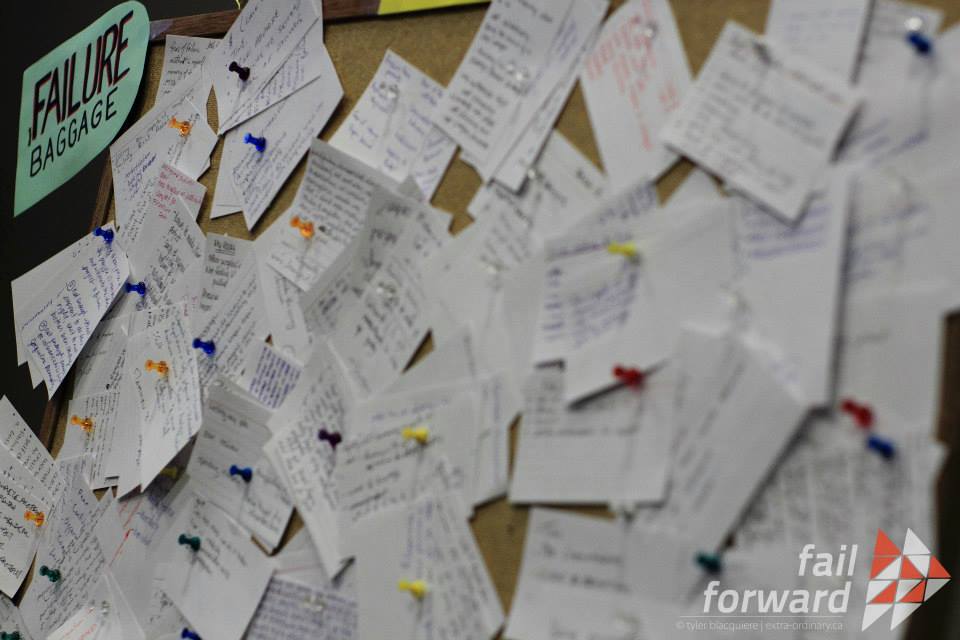In his book, The World After Midnight, Eddie Obeng talks about how ‘today, the current pace, scale and interconnectedness of change exceed our ability to learn.’ This means that failure – caused by uncertainty and complexity, as opposed to incompetence – is becoming increasingly commonplace.
In order to succeed, leaders of today must be prepared to fail, and to fail well. Failing well, or ‘intelligent failure,’ means acknowledging that failure happens to the best of us, and building the skills needed to learn and grow stronger from one’s mistakes. Below are some tangible tools and practices that leaders can adopt to strengthen their organization’s resilience towards failure.
1. Make your workplace a safe place to talk about failure.
Leaders can do this by role modelling humility and acknowledging their own fallibility, encouraging staff to challenge their ideas, and framing complex initiatives as experiments where the goal is to learn on the path to success. This is harder than it sounds as it requires challenging the traditional expectations that leaders ‘have all the answers.’
However, by openly sharing and talking about your own mistakes, and recognizing others who do the same, you can shift your workplace towards taking a more blameless and productive approach to failure.
2. Determine how well your company is equipped to deal with failure.
Most of us try to fix failures as quickly as possible so we rarely take the time to consider the range of opportunities, processes and norms we could put in place to ensure failures lead to growth. This can be done by examining your organization’s culture: how are we talking about failure? Are conversations embedded with blame and self-criticism, or is there an openness and willingness to explore failure for deeper learning?
Do your job roles allow for learning and reflection? Do you have a ‘what if I screw up’ process in your employee orientation? Are conversations around ‘what’s not going well?’ a regular agenda item in meetings?
3. Define your risk sandbox.
How much risk can your organization tolerate? What types of failures are acceptable? There are two major dangers when these boundaries aren’t clearly defined: 1) No one tries anything new because they feel that they’ll only be rewarded if they’re successful; or 2) Too much risk is taken and your company isn’t able to recover. With the walls of your sandbox clearly defined, your employees will understand how much room they have to play with in pursuit of innovation and how much risk is too much.
4. Visualize failure.
This is a practice borrowed from NASA. It refers to taking the time to imagine all the ways a project could go wrong before you start. This has less to do with coming up with detailed contingency plans, and more to do with cultivating early detection and healthy attitudes towards failures when they do arise. Visualizing failure helps the members of your organization feel better prepared to deal with challenges as they come up while giving them the language to talk about the inevitable road bumps along the way.
5. Adopt a practice of intelligent failure.
There are many internal and external ways to embed failing well into the DNA of your organization. Your hiring process could incorporate questions around self-awareness and learning through past experiences. Employee training might include defining the difference between acceptable and unacceptable failures – such as those that lead to innovation, compared with moral or ethical failures.
Intelligent failure can be embedded into business procedures through blameless post-mortems and incorporating discussions about past and possible future failures into meeting agendas. It can also become a project success indicator: how well did your team learn from mistakes and adapt accordingly along the way?
There are tangible examples of what this practice might look like: Engineers Without Borders Canada produces an annual Failure Report; Lululemon created a failure wall with their store managers; and the UN’s International Fund for Agriculture Development hosted a FailFaire.
From our earliest years through to adulthood, we’re all taught how to succeed, yet we rarely think about failing well as a skill. It’s no surprise that we react unproductively when failure inevitably happens. By taking a more productive approach to failure and by adopting some tools and practices for dealing with failure, leaders can increase their resilience and adaptability making them better equipped to succeed in today’s ever-changing world.
This article was originally published on The Globe and Mail on July 06, 2014.
Photo credit: Billy Lee and FailForward.
About the Author
To kick off her career, Ashley worked in Cairo with the United Nations Environment Programme and as a management consultant in Vancouver, Canada. In both lines of work, she saw a fear of failure inhibit innovation, adaptation, and performance. In response, she launched both AdmittingFailure.com and the consulting firm, Fail Forward, to spark a shift in how we perceive and talk about failure, and to help organizations learn, innovate and build resilience. She is well known for building the Organizational Learning Team at Engineers Without Borders Canada, and she continues to lead their annual Failure Report.
If you’d like to repost this article on your website, please see our reposting policy.

